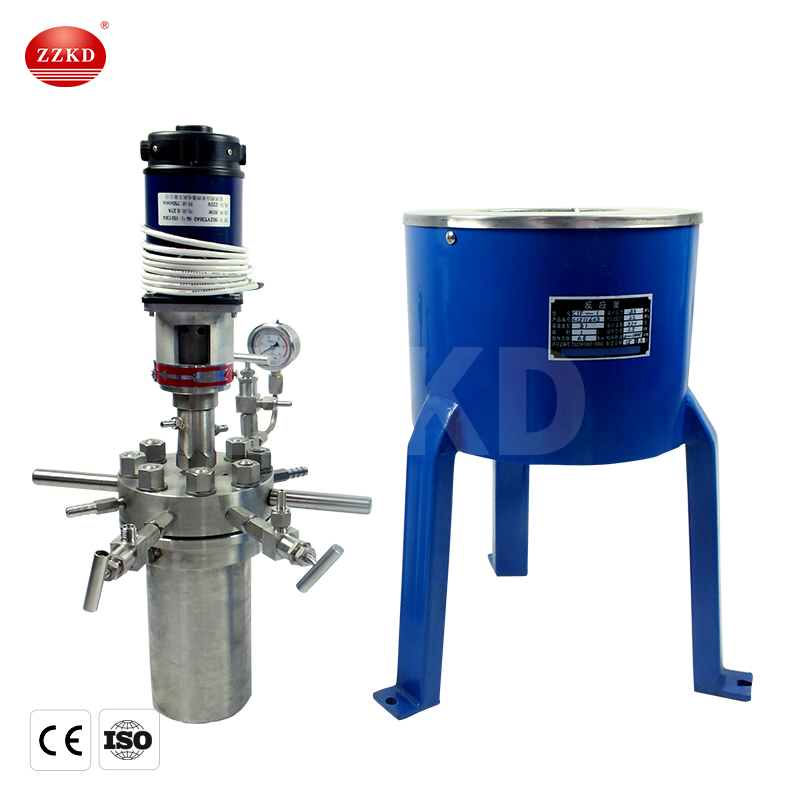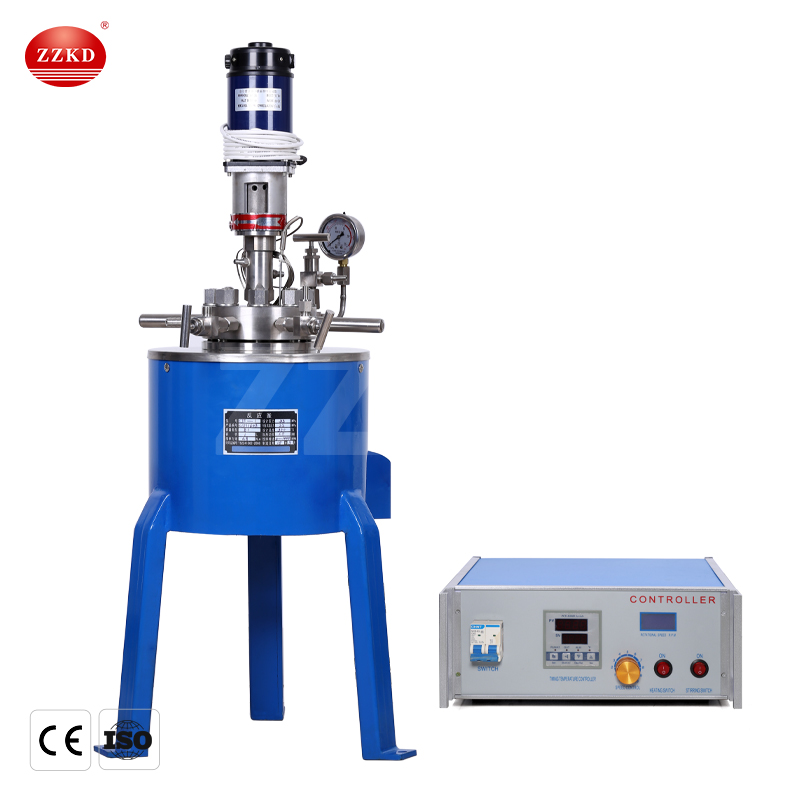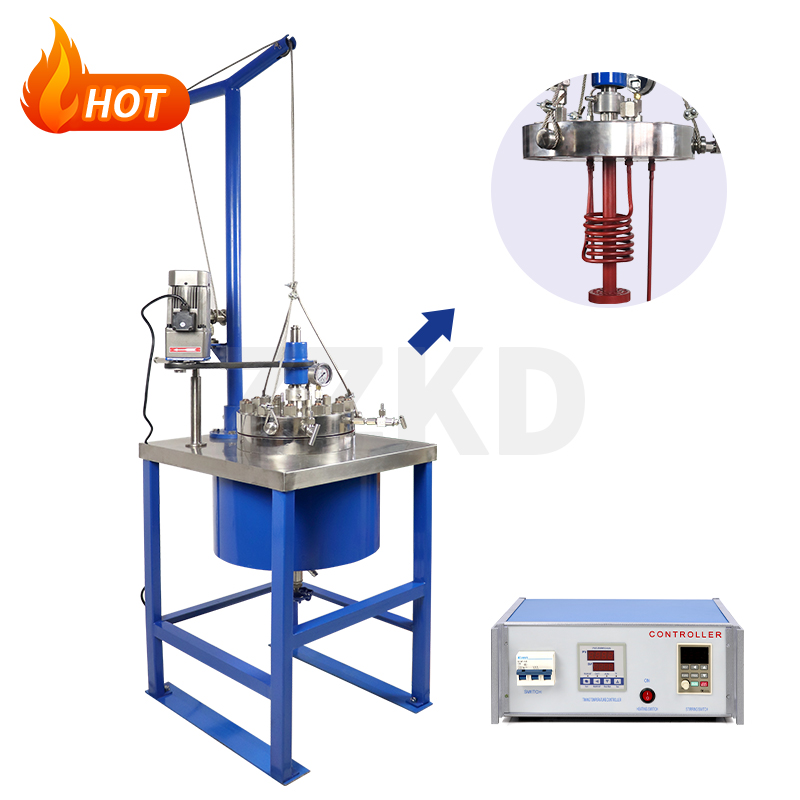Laboratory Scale High Pressure Reactor
An lab scale high pressure reactor is a device that performs chemical reactions under high pressure, also known as autoclave and autoclave. According to the process requirements, there are two kinds of autoclaves with stirrer and without stirrer, the former structure is the same as the stirring equipment.The basic principle of an autoclave is similar to that of a pressure cooker, in which high temperature is achieved by increasing the boiling point of water by pressurization. The autoclave needs to remove the air with a lower specific heat capacity and replace it with saturated water vapor in order to effectively heat the object to achieve sterilization. Laboratory high pressure reactor manufacturers are mainly used for small-dose high-temperature, high-pressure, hydrogenation, polymerization and other experiments in universities, research institutes, laboratories and enterprise units.

The composition of the high pressure reactor is introduced:
The high pressure reactor is composed of container, agitator and transmission system, cooling equipment, safety equipment, heating furnace, etc. Its structural features are: the kettle body is a high-pressure cylinder, the shell is thick, and it is made of high-temperature and corrosion-resistant materials; the lid of the kettle is equipped with pressure gauges, bursting membrane safety devices, gas-liquid phase valves, temperature sensors, etc., so that it is convenient to know the kettle at any time. Adjust the proportion of medium in the kettle to ensure safe operation.
1. The body of the pot and the lid of the pot are made of stainless steel. The body of the pot is screwed to the flange. The ball cover is a simple plate cover, the two are held together and connected by core screws and nuts arranged in a circle.
2. The main sealing port of the autoclave adopts double-line sealing, and other sealing points adopt the sealing method of line contact between arc surface and plane, arc surface and arc surface. Relying on the high precision and smoothness of the contact surface, excellent sealing is achieved. effect.
3. Insert the core of the silicon carbide furnace outside the boiler. The wires of the electric oven pass through the core of the oven.
4. The lid of the kettle is equipped with pressure gauges, explosion-proof membrane safety equipment, vapor-liquid valves, temperature sensors, etc., Adjust the environmental ratio in the pot to ensure safe operation in order to always understand the nature of the reaction in the particles.
5. The coupling is mainly composed of a pair of inner and outer magnetic rings with strong magnetic force, and there is a pressure-bearing spacer in the center. The mixer is driven by a servomotor via a clutch. By controlling the speed of the servo motor, the intention of controlling the mixing speed can be achieved.
6. The upper part of the spacecraft is a speed measuring instrument. When the integrated agitator and the inner magnetic ring rotate, the speed measuring coil will generate an induced electromotive force. Rotating speed.
7. Install a cooling water jacket between the magnetic coupling and the boiler cover. If the operating temperature is high, the cooling water must pass through the cooling water and the magnetic steel is too hot to degauss.
8. The bearings are made of stainless steel bearings or high-strength electrochemical graphite, which are resistant to wear and tear and have a long service life.

Steps for using the high pressure laboratory reactor:
1. Add 250ml of water into the autoclave, install the autoclave cover, and tighten the screws according to the above operation.
2. Pour nitrogen into the pressure autoclave to about 0.7MPa, test the pressure for 30 minutes, and see if the pressure changes to determine whether it is leaking.
3. After the pressure test is completed, release the nitrogen in the autoclave.
4. Turn on the power, start mixing and heating, control the mixing speed, and control the heating and heating speed within 100℃/h, and cool the mixing shaft through the cooling water at the same time.
5. Set the temperature at about 160°C, and record the pressure value in the autoclave under different temperatures. During the test, record a pressure value every 10°C.
6. After the test, first pass cooling water to cool the autoclave liquid, cool it to below 80°C, open the open autoclave, and release the pressure in the autoclave.
7. Open the autoclave cover, clean the autoclave body, and close the cooling water and power supply.

Laboratory high pressure reactors precautions:
1. Before turning on the current switch of the console, the stirring switch and the speed regulating heating switch should be adjusted to zero.
2. Before feeding, rinse the inner wall, stirring and joint surfaces of the autoclave with the mother liquor, and then slowly close the upper cover to avoid bumping the joint surfaces.
3. When screwing on the screw, it must be seated correctly, and use a torque wrench to form a cross symmetrically on the ground to avoid uneven force. The screws should not be twisted in place at one time, but should be tightened gradually and symmetrically.
4. After the screws are tightened, first use a mechanical pump to evacuate, and then repeatedly pass nitrogen two to four times to exhaust the air in the kettle, then evacuate, pass in hydrogen, start stirring, heat up, and operate normally.
5. After the reaction was completed, the stirring was stopped, the residual hydrogen in the kettle was exhausted, nitrogen was introduced, vented, and the screw was unscrewed for sampling.
The 6.5L hydrogenation reactor is not resistant to strong acid, and strong acids such as hydrochloric acid, sulfuric acid, and nitric acid are prohibited in the reaction solution.
7. In the vicinity of the hydrogenation reactor, it is forbidden to operate with sparks, and it is forbidden to wear nails.
Laboratory high pressure reactors application areas:
Autoclaves are widely used in microbiology, medicine, tattoos, body piercings, veterinary medicine, dentistry, podiatry and prosthetics. Autoclaves vary in size and function depending on what they handle. Typical disposal objects include laboratory glassware, surgical instruments, medical waste, patient care supplies, animal cage filling pads, and LB media.


